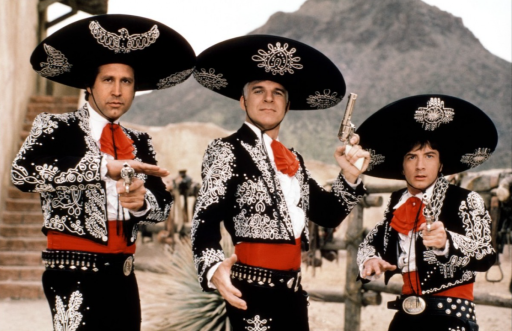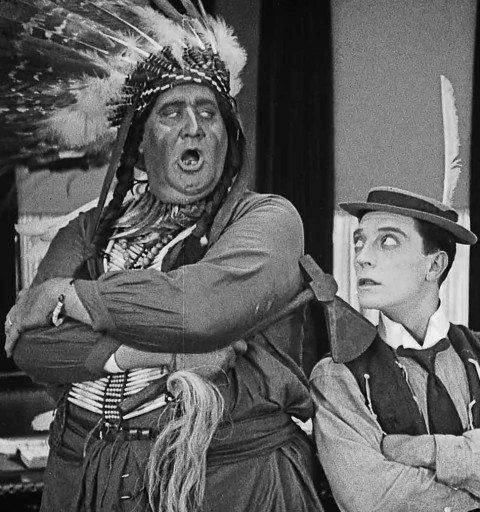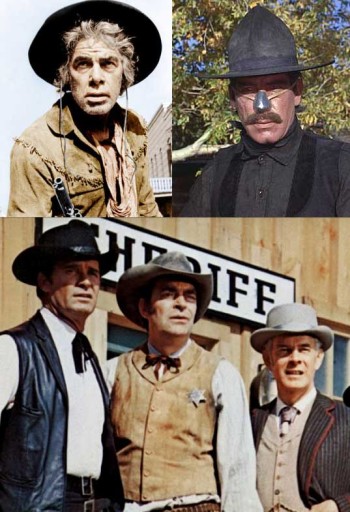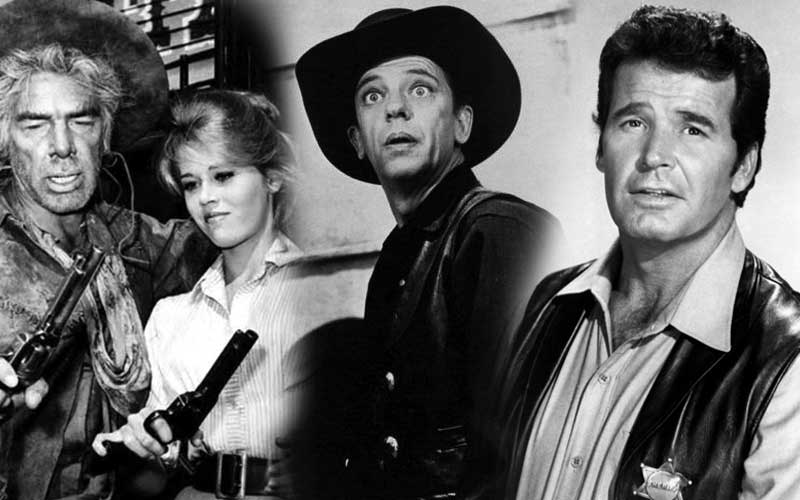 Seth MacFarlane’s A Million Ways to Die in the West could be described as a film that attempts to bring back a ‘dead genre.’ It’s been suggested that there hasn’t been a good Western comedy since Blazing Saddles in 1974. That was 40 years ago … forty! Four decades! I could think of a few decent exceptions; The Frisco Kid, The Three Amigos, Maverick and Shanghai Noon, but I find the sentiment to be mostly true.
Seth MacFarlane’s A Million Ways to Die in the West could be described as a film that attempts to bring back a ‘dead genre.’ It’s been suggested that there hasn’t been a good Western comedy since Blazing Saddles in 1974. That was 40 years ago … forty! Four decades! I could think of a few decent exceptions; The Frisco Kid, The Three Amigos, Maverick and Shanghai Noon, but I find the sentiment to be mostly true.
And a quick glance at the reviews for A Million Ways to Die in the West reveals that the drought continues.
So why did the Western comedy genre die? The sheer number of Westerns made in the ’60s and ’70s is pretty staggering, and some humorous Westerns were not full-on comedies. A film like Butch Cassidy and The Sundance Kid (1969) isn’t exactly a comedy, but it holds some great comedic elements. The only commonality between it and Blazing Saddles is probably the wardrobe and horses. Mel Brooks took Blazing Saddles to a different place, relying more on satire and ludicrous jokes, and less on a dramatic plot. This concept wasn’t new, it’s only that Brooks did it masterfully, and his comedic timing was perfect.
 To find the seeds of what made a film like Blazing Saddles possible, and then to potentially mark the end of a genre, you have to go back to the silent era and the birth of the Western comedy. Buster Keaton put the genre on the map with The Paleface, the 1922 movie about a man who wanders into a Native American village. Keaton had made a few other Western comedy-style short films prior to The Paleface, but this one was significant enough to be remade into a full-length talkie in 1949 with Bob Hope. Hope’s version won an Oscar for best song — Buttons and Bows — which garnered lots of record sales. Later, in 1968, Don Knotts reprized the role in The Shakiest Gun in the West. This version was highly popular as well, due largely to the comedic genius of Knotts, who was already a household name from his time on The Steve Allen Show and The Andy Griffith Show.
To find the seeds of what made a film like Blazing Saddles possible, and then to potentially mark the end of a genre, you have to go back to the silent era and the birth of the Western comedy. Buster Keaton put the genre on the map with The Paleface, the 1922 movie about a man who wanders into a Native American village. Keaton had made a few other Western comedy-style short films prior to The Paleface, but this one was significant enough to be remade into a full-length talkie in 1949 with Bob Hope. Hope’s version won an Oscar for best song — Buttons and Bows — which garnered lots of record sales. Later, in 1968, Don Knotts reprized the role in The Shakiest Gun in the West. This version was highly popular as well, due largely to the comedic genius of Knotts, who was already a household name from his time on The Steve Allen Show and The Andy Griffith Show.
Another highlight was the 1965 film Cat Ballou, starring Jane Fonda and Lee Marvin. The film was adapted from a serious Western novel — but shot as a slapstick comedy. Lee Marvin walked away with a few awards for his performance, including the Oscar for Best Actor. Marvin plays both a drunken bum hired by Fonda to help protect her father’s ranch and the gunslinger he is to defeat. Marvin’s dual roles contributed to his commendation, and gave credibility to Western comedies in general.
 In 1969 United Artists released Support Your Local Sheriff!, starring James Garner. Garner was already perceived as a cowboy at the time, as he starred for three seasons in the Western TV show Maverick, which was on the air for five years starting in 1957. Garner had also starred in some comedy films — and Western comedies — by this point. Support Your Local Sheriff! had a large ensemble cast of comedic actors that sent the film into funny side plots. The film was the 20th most popular film of 1969 at the US box office, and also had a follow-up film, Support Your Local Gunfighter, released in 1971. This second film was not a sequel, but had many of the same actors and the same tone as the first film.
In 1969 United Artists released Support Your Local Sheriff!, starring James Garner. Garner was already perceived as a cowboy at the time, as he starred for three seasons in the Western TV show Maverick, which was on the air for five years starting in 1957. Garner had also starred in some comedy films — and Western comedies — by this point. Support Your Local Sheriff! had a large ensemble cast of comedic actors that sent the film into funny side plots. The film was the 20th most popular film of 1969 at the US box office, and also had a follow-up film, Support Your Local Gunfighter, released in 1971. This second film was not a sequel, but had many of the same actors and the same tone as the first film.
One big reason for the demise of the Western comedy in Hollywood was that studios exhausted the genre. In the early to mid-’70s you couldn’t go to the movie theater without seeing a Western comedy on the marquee. It was almost as though the Old West sets and wardrobe were just being used and re-used for their mere presence. It also seemed they would cast just about anyone, such as Frank Sinatra in Dirty Dingus MaGee, a film that was not well received and only drew attention via Sinatra’s star power. Films like The Brothers O’Toole, released in 1973 and starring John Astin, didn’t have enough star power at the time, and the comedy wasn’t all that well written. But the movie is worth watching for this scene in which townspeople gather for a ‘Spitting, Belching & Cussing’ contest. You could almost imagine Mel Brooks shaking his head, knowing he could do better.
As we know from Toy Story, cowboys and Indians were slowly being replaced by a fascination with space exploration, starting with Sputnik in 1957 and accelerating through the Moon landing in 1969. The operative word there is ‘slowly.’ It took two decades between the ’60s and ’70s to get past Westerns in general, mostly due to high-caliber actors like John Wayne, Henry Fonda and Clint Eastwood making gritty Western films at the time. Not to mention the many Western TV shows like Bonanza, Gunsmoke, The Big Valley and The Rifleman gaining and then maintaining their popularity. Space wasn’t even safe from the Western influence: After the first Star Trek pilot aired in 1966 and was found to be too cerebral for viewers, they relaunched a second pilot, armed James T. Kirk with a space-aged six shooter called a ‘phaser’ and had him and his ‘posse’ grapple with aliens on remote planets. It was the Wild West in space. This was a big shift, essentially moving the last frontier from the West to the heavens; not only on the screen, but in our hearts and minds as well.

